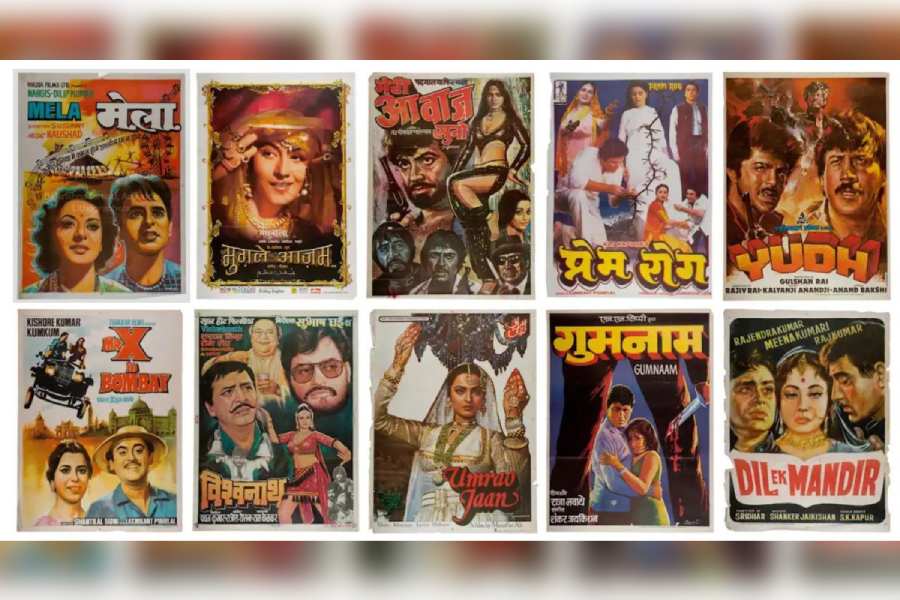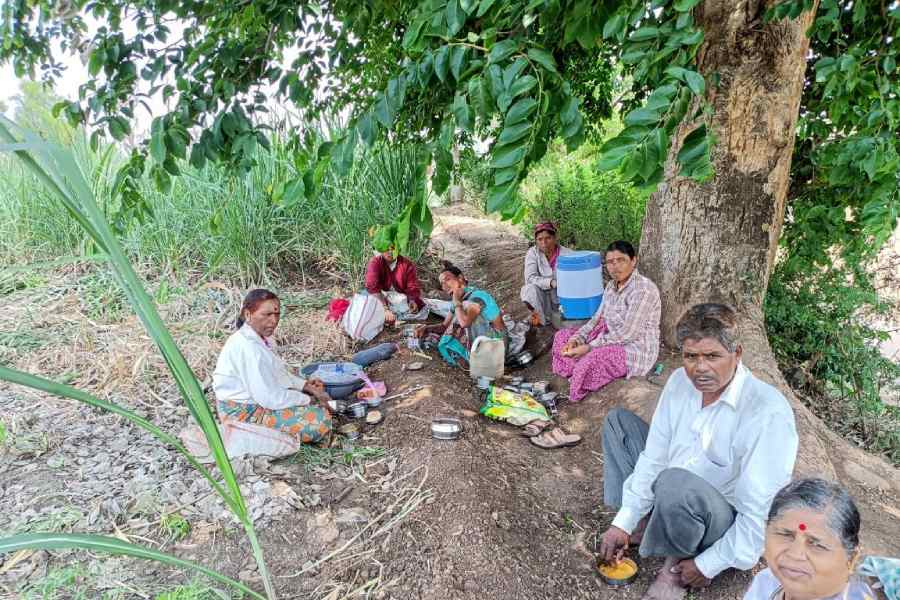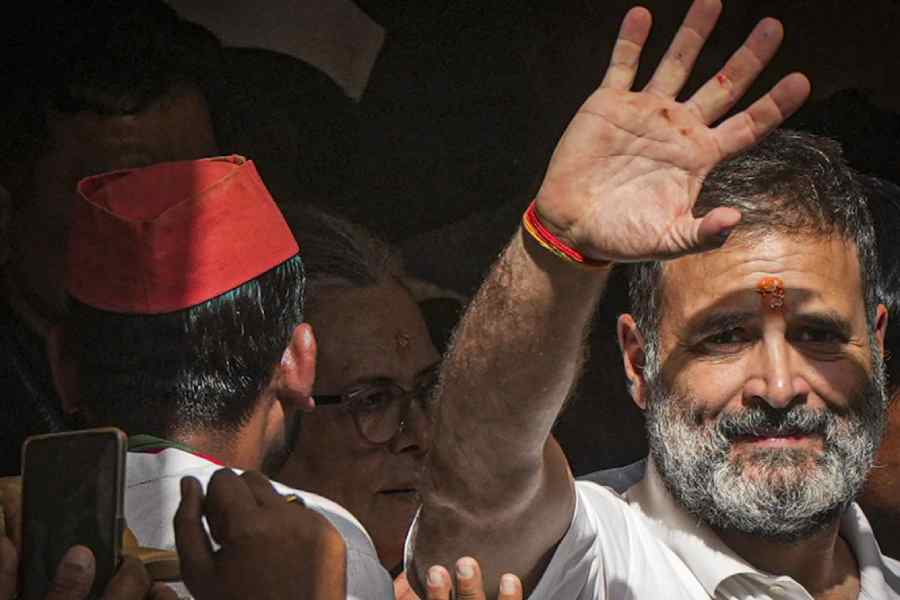Lobby cards? Hand-drawn film posters? Unique fonts for film titles? Google Arts & Culture, which has been around for a long time, has a brilliant initiative to digitise the long history of the Hindi film industry. It’s an online project that is accessible to everyone, free of cost.
The exhibit leverages technology like Google’s Augmented Reality and Street View to offer an immersive experience across over 120 curated stories and over 7,000 assets, including around 5,000 hi-res images and more than 1,500 videos, posters and songs related to films spanning classics, such as Manthan, to modern blockbusters. Helping Google Arts & Culture is its partnership with 21 cultural organisations, including the National Film Archive of India, The Museum of Art & Photography and Yash Raj Films.
“Google Arts & Culture was founded over 10 years ago and since day one, we’ve been collaborating with partners in India. We want to support museums, cultural collections, cultural organisations to make their art, their treasure story, more accessible to the public at large. This is why we exist. Since 2011, we have been very lucky to engage with very prominent organisations. I can maybe drop a few names… the Archaeological Survey of India is, of course, one of them. We’ve been collaborating closely with Incredible India and so many other partners across the country,” said Pierre Caessa, head of partnerships, India, Google Arts & Culture, over a video call.

Helen trained as a Manipuri dancer before joining films. PL Raj, her choreographer for many film dances, trained her in Kathak and Bharatnatyam as well.
The exhibit was unveiled at the International Film Festival of India 2023’s Film Bazaar. Sanjay Gupta, country head and vice-president, Google India, spoke about the importance of the exhibit: “The power of storytelling to bring together peoples, cultures, and communities is truly exceptional, and a timeless hallmark of Indian history and heritage. Films add a new level of immersion and wonder to storytelling — overcoming literacy barriers, catering to India’s linguistic diversity, and effortlessly engaging people across the spectrum. This is a baton we too proudly carry at YouTube with its promise to give everyone a voice, and to show them the world. We’re deeply committed to the twin responsibilities YouTube serves to accelerate the democratisation of storytelling — of propelling the works of India’s film industry, creators and artists towards larger audiences both in India and abroad, and of leveraging bleeding-edge AI and machine learning to support a thriving ecosystem that safeguards the needs of creators and protects our platform’s viewers.”
‘Hindi cinema is much more than just cinema’
The exhibit takes visitors through an immersive experience involving the history of Hindi filmmaking. There are stories about iconic films and industry legends, and through a 3D virtual gallery space and virtual Hall of Fame featuring posters, film archives and music, you get a good overview of how things have shaped up. Some of the features worth looking at is a 360-degree virtual tour of Mumbai’s Art Deco theaters like Liberty and Regal Cinemas. There is also augmented reality technology at play, allowing visitors project hand-painted posters and banners of iconic films onto walls with their smartphones.

Hunterwali has gone down in history as one of the earliest Indian films to feature a woman lead. Its star, the Australian-Indian Mary Ann Evans, became known by her stage name, Fearless Nadia, such was her pioneering spirit
“For a very long time, we’ve been engaging with partners about cinema. And we’ve been advised by quite a few experts; I’m thinking of people like Anupama Chopra. The way Google Arts & Culture function is bringing technologies and involving experts, so they can sell a story to the world. The project is about bringing Hindi cinema to the world. I think these curators… experts help us craft what I think is a love letter. It’s a love letter to Hindi cinema. It spans across time. There are film directors and then there is song and dance. Hindi cinema is much more than just cinema. It’s a form of art which is very complete. This is what we wanted to bring to the public, a love letter that is a tribute. When you think of people like V. Shantaram, for instance, those guys were pioneers, trying new techniques. It comes down to people and their passion. It’s also about posters, archival images, also videos and songs from old movies… there is a lot to explore. So what can we do to help this? That’s where technology can play a role. Our project takes you on a step by step journey, as if you were walking through a virtual museum,” said Caessa.
‘This is just part one’
Instead of focusing on just presenting articles on Hindi cinema, the way Google deploys technology to make exhibits interactive, is where the real magic lies. Caessa made it clear that “falling in love is like a two way street”.
He said: “That’s why the interactive part is so important for us. If you scroll down on the page, the most important thing I guess is that this is truly Hindi cinema experts talking to the world. But you may wonder why Hindi cinema? Why stop at that? This is only part one, we’re just getting started. Hindi cinema I think is a great entry point for us. But there is much more we have to do. Tamil cinema, Tollywood... there is so much the country has to offer. But it’s very hard to pretend that you have an encyclopedic way to talk about things. We wanted to get through part one of this journey first. And from there, we really hope that together with new partners we’ll be able to share part two with the world, which will also be an exciting journey. This is really a Google Arts & Culture way of doing things. We partner with people who are experts. We help digitise their content. We help bring their stories to the world. And we build with them an exciting repository of content that allows people to access culture, educates them, make them have fun with culture and we grow long-term partnerships.”

All through the 1930s V. Shantaram’s films set new benchmarks for a women’s cinema which spoke of strong defiant women who stood steadfast against an unyielding society. In the fading years of his career his films centered around strong female characters: Ladki Sahyadri Ki, Jal Bin Machhli Nritya Bin Bijli, Pinjra and Chaani
Google Arts & Culture has done many brilliant online exhibits over the years. Over the last decade, it has worked with over 100 institutions in India, starting with National Museum, the National Gallery of Modern Art, and the Archaeological Survey of India, to celebrate various aspects of Indian culture, including journeys of the 150 years of Indian Railways, and assisted in the digitisation of national treasures such as the miniatures from the National Museum’s collection. This is the latest.
“I think this project will also get young people excited because Hindi cinema is intertwined and connected to the culture of the country. I have talked to a few people and some have said: ‘Oh, you look at DDLJ (Dilwale Dulhania Le Jayenge). It’s an iconic ’90s movie. And I fell in love with the dances, the acting… there is so much. It’s not just Bollywood. Hindi cinema is big and it has a lot to say. You don’t have to be Indian to love Hindi cinema. You can be anywhere in the world. It’s an industry that has this power of conveying emotions and passion to the world. People at times will say: ‘But Hindi cinema is very long; it’s like three hours.’ Yeah. But there is a whole culture behind this. There is intermission, there are dances, songs… so many things to extend the emotion of dialogues. And you don’t have that in French movies. You don’t have that in Hollywood. It’s a very different way of creating movies. We hope that the audience will reengage with old materials (in the exhibit),” said Caessa.
He points out that the craze for Indian cinema in general beyond India has been there for a long time. Musée du Quai Branly, for example, is having a huge exhibition in Paris. There are over 200 works — paintings, shadow figures, costumes, photographs — to illustrate the incredible diversity of popular arts, stories and artistic influences of Indian cinema.

Pierre Caessa, head of partnerships, India, Google Arts & Culture
“I have just come from Paris, landed in Goa for the festival two days ago. Just before coming, I was in front of a museum (Musée du Quai Branly) where a show about Hindi cinema is going on. And there was a long queue in front of the museum. Paris is mad about Hindi movies and so are many people across the world. We want to encourage people to continue discovering through the museum experience, but they can also continue that online. I think that Google Arts & Culture can create an appetite for people to go to the movies, to go to the theater. Of course, online is great. But it’s just one step to make you want to go back to theatres. To experience (cinema) with other people. It’s kind of a shared experience, right? Your screen, your phone is nice, but the best (way) is to be in a movie theatre and experience it for real,” said Caessa.
The exhibit also features fascinating conversations hosted by Anupama Chopra with industry veterans Shabana Azmi and Karan Johar as part of a specially-commissioned video series with Film Companion.
One wonders if Caessa finds the archival process in India any different from how it is done in, say, Paris. “I have had the privilege of talking to very different sets of people across the world. And, of course, there are differences. You have a way of working in France that is very different to the one maybe in Spain or in Portugal or in Italy or India. What I can say about India is that I’m amazed by the energy and the passion of the people. They have a relationship with a culture that is unique.
“When you look at a digital initiative from these people, they think ahead. Digitisation is not only something that makes sense, they already have the next chapter in mind. We see this (digitisation) curve which is accelerating and is very impressive. It’s really a pleasure to work with partners in India. I’ve been visiting India for sometime now and I’m always welcomed by institutions, which is a unique feeling… coming from France to India, with limited knowledge of the culture of the country. Each and every time I’ve come here, I have been warmly welcomed by institutions, public and private foundations and they’re always finding time to share their culture with me,” said Caessa.










